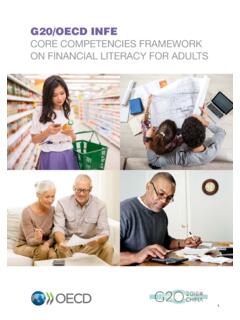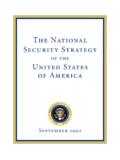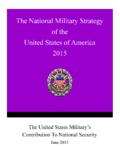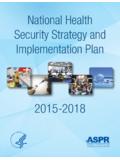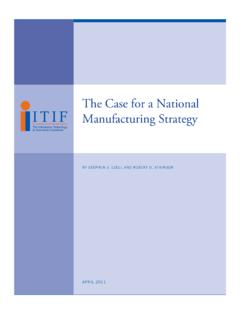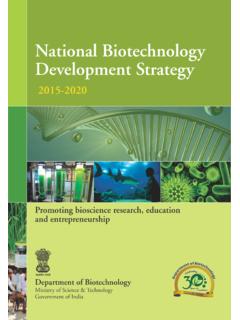Transcription of National financial literacy strategy
1 REPORT 229 National financial literacy strategy March 2011 About this report This report sets out a strategy for the development and delivery of initiatives to improve the financial literacy of all Australians and enhance their financial wellbeing. It is a framework for many agencies and organisations working in partnership. This strategy is a living document that will be publicly reviewed and consulted on two years after it is released. REPORT 229: National financial literacy strategy Australian Securities and Investments Commission March 2011 (minor amendments made January 2012) Page 2 About ASIC regulatory documents In administering legislation ASIC issues the following types of regulatory documents. Consultation papers: seek feedback from stakeholders on matters ASIC is considering, such as proposed relief or proposed regulatory guidance.
2 Regulatory guides: give guidance to regulated entities by: explaining when and how ASIC will exercise specific powers under legislation (primarily the Corporations Act) explaining how ASIC interprets the law describing the principles underlying ASIC s approach giving practical guidance ( describing the steps of a process such as applying for a licence or giving practical examples of how regulated entities may decide to meet their obligations). Information sheets: provide concise guidance on a specific process or compliance issue or an overview of detailed guidance. Reports: describe ASIC compliance or relief activity or the results of a research project. REPORT 229: National financial literacy strategy Australian Securities and Investments Commission March 2011 (minor amendments made January 2012) Page 3 Contents Executive summary.
3 4 Why do we need a financial literacy strategy ? .. 4 Principles underpinning this strategy .. 5 Elements of the strategy .. 5 financial literacy and the global financial crisis .. 8 Map of the National financial literacy strategy .. 8 A Why we need a financial literacy strategy ..11 What we mean by financial literacy ..11 The increasing importance of financial How financially literate are we? ..14 Benefits of improving financial literacy ..16 Principles behind the strategy ..16 B Using educational pathways to build financial literacy ..18 Educational pathways ..18 financial literacy in the school curriculum: where are we up to? ..19 Further education ..22 Adult and community education ..25 Indigenous education ..26 Education in the workplace ..26 C Providing Australians with trusted and independent information and ongoing support.
4 27 Behavioural change ..27 Information needs of Australian consumers ..27 How do people want to receive information?..28 Maximising the appeal and effectiveness of financial literacy information ..30 Target groups, priorities and campaigns ..31 ASIC as a key information source ..32 New ASIC consumer website ..32 Social media ..36 Other channels ..36 D Achieving positive behavioural change ..37 How consumers and investors make decisions and why ..38 Traditional regulatory strategies ..39 New strategies to improve consumer and investor decision making ..40 E Working in partnership and promoting best practice ..49 Working in partnership ..49 Key financial literacy stakeholders ..50 Liaison, consultation and promotion ..53 Measuring what we do ..54 Appendix: ASIC s financial literacy priorities.
5 55 Key terms ..57 List of REPORT 229: National financial literacy strategy Australian Securities and Investments Commission March 2011 (minor amendments made January 2012) Page 4 Executive summary 1 financial literacy is about understanding money and finances and being able to confidently apply that knowledge to make effective financial decisions. 2 Knowing how to make sound money decisions is a core skill in today s world, regardless of age. It affects quality of life, opportunities we can pursue, our sense of security and the overall economic health of our 3 Because financial literacy is so important, the Government has asked ASIC to prepare a National financial literacy strategy (the strategy ). 4 We have prepared this strategy in consultation with key financial literacy partners and stakeholders, and after conducting considerable research into what Australians know and don t know about money matters and what we do and don t do in this area.
6 5 The strategy builds on existing initiatives and achievements in Australia and overseas. In particular, it builds on the work of the former financial literacy Foundation, whose responsibilities were transferred to ASIC in 2008, and has benefited from input from the Australian Government financial literacy Board, who have endorsed the strategy . We have also learnt much from the work done by the United Kingdom, New Zealand, the Organisation for Economic Co-operation and Development (OECD) and Why do we need a financial literacy strategy ? 6 The evolution of Australian society and the Australian financial system have made financial literacy a necessary and critical skill for consumers and investors. 7 The growing range of financial products available, changes in demography, and increases in consumer responsibility for superannuation decisions and retirement incomes have all increased the importance of having sound financial literacy skills.
7 8 Research has shown that there are significant disparities in knowledge and understanding of financial matters across different groups in the community. Overall, people seem to be more knowledgeable and confident about simple and familiar finance topics such as budgeting; and less knowledgeable and confident about more complex and unfamiliar topics such as investing and saving for retirement. 1 The more knowledgeable consumers are in the way they interact with the financial services sector, the more effective and efficient that sector will become, creating savings and ideally reducing the need for regulatory intervention. 2 See Retirement Commission (2008); Thoresen (2008); de Meza et al (2008); HM Treasury (2007); HM Treasury and FSA (2008); PFRC (2008).
8 REPORT 229: National financial literacy strategy Australian Securities and Investments Commission March 2011 (minor amendments made January 2012) Page 5 9 Improving financial literacy can have significant benefits for everyone, no matter what their age or income. By developing confidence, knowledge and skills to manage financial products and services, individuals will be better able to overcome or avoid financial exclusion. Such exclusion impacts on the opportunities individuals can pursue, their sense of security and their overall emotional and physical wellbeing. 10 Good financial literacy skills help individuals and families make the most of opportunities, meet their goals and secure their financial wellbeing, as well as contribute to the economic health of society. 11 Improved financial literacy can increase economic participation and social inclusion, drive competition and market efficiency in the financial services sector, and potentially reduce regulatory intervention.
9 Principles underpinning this strategy 12 This National strategy to improve financial literacy is founded upon the following core principles: inclusiveness reaching all Australians, particularly those most in need and future generations of consumers and investors; engagement helping all Australians appreciate the importance of financial literacy and that small things done regularly make a real difference; diversity delivering learning that recognises the different ways people learn and allows all Australians to participate; knowledge and empowerment giving all Australians access to information, tools and ongoing support systems; improving outcomes recognising that information alone is not always enough and using additional mechanisms to achieve better outcomes; partnerships mapping and building on existing foundations to fill gaps and ensure all sectors and agencies work cooperatively; and measurement evaluating our work to know what is and is not effective, and learning from and sharing these evaluations.
10 13 These principles guide how this strategy has been formulated, what initiatives it focuses on, which demographic groups it focuses on and how we propose to implement it. Elements of the strategy 14 Overall this strategy aims to help Australians improve their financial wellbeing by providing a National framework and focus for financial literacy REPORT 229: National financial literacy strategy Australian Securities and Investments Commission March 2011 (minor amendments made January 2012) Page 6 education and services in Australia. Implicit in the strategy is that this must be a long-term endeavour that spans generations. 15 There are four core elements of the strategy : using educational pathways to build financial literacy for all Australians; providing Australians with trusted and independent information, tools and ongoing support; recognising the limits of education and information, and developing additional innovative solutions to drive improved financial wellbeing and behavioural change; and working in partnership and promoting best practice.
